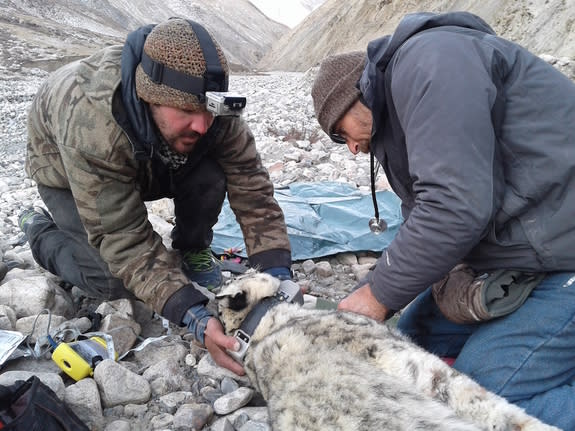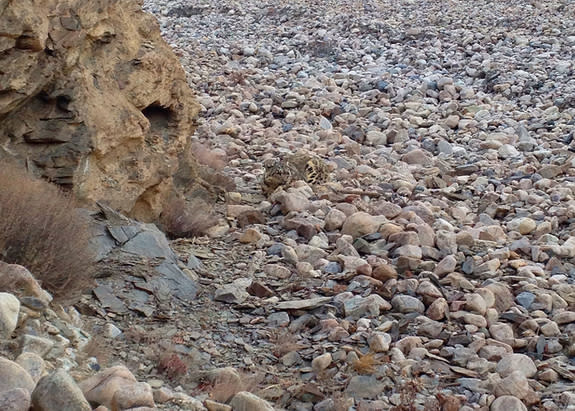Spotted! Elusive Snow Leopard Caught on Camera in Kyrgyzstan
Scientists have captured new images of a snow leopard being collared in Kyrgyzstan. The move marks the first time that one of these elusive creatures has been collared in the remote Central Asian nation.
The gorgeous, white-coated creature is a female in the prime of her life, between 6 and 7 years old. She was collared in the Sarychat-Ertash Strict Nature Reserve in eastern Kyrgyzstan, near the border with China.
The collaring — which was conducted by Panthera, a global wild cat conservation organization, as well as partner organizations and government agencies — could help researchers understand how the endangered creatures live. [Rare Photos: Snow Leopard Babies in Dens]
"Each and every snow leopard we collar gives us invaluable new insights into the conservation of the entire species as well as the high mountain habitats they need to survive," lead researcher Shannon Kachel, a doctoral candidate in environmental and forest sciences at the University of Washington in Seattle, said in a statement. "Each collared animal teaches us new lessons about how snow leopards interact with their habitat and prey, with one another, and with us — lessons which ultimately help us protect this beautiful and elusive species and the landscapes that it depends on."
Elusive creatures
Snow leopards (Panthera uncia) are the shaggy ghosts of the mountains. The camera-shy creatures live throughout the rugged, mountainous reaches of 12 different countries in Asia, yet even many locals who live among these big cats have never seen a trace of them.
The majestic Himalayan creatures are perfectly adapted to their snowy climate. They sport thick fur coats that help them brave the frigid temperatures, and wide paws for padding silently through the snow.
But herders hoping to protect their flocks have often hunted down the big cats. Poachers seeking their warm fur coats and internal organs, which are used as ingredients in traditional Chinese medicine, have also set their sights on the majestic beasts. As a result, the snow leopard population has declined by 20 percent over the last two decades, according to Panthera. Because the elusive snow beasts are so hard to spot, estimates of the population range from 4,500 to 10,000 adults, and the International Union for the Conservation of Nature considers the snow leopard an endangered species.
In recent years, conservationists have stepped up their efforts to learn more about the mountain dwellers by collaring them and tracking their movements; placing camera traps throughout their habitat; estimating the number of their prey, such as blue sheep and Asiatic ibex; and even analyzing the DNA in their poop, according to Panthera. They've also recruited Buddhist monks to help protect the endangered cats
Follow Tia Ghose on Twitterand Google+. Follow Live Science @livescience, Facebook & Google+. Original article on Live Science.
Copyright 2015 LiveScience, a Purch company. All rights reserved. This material may not be published, broadcast, rewritten or redistributed.




